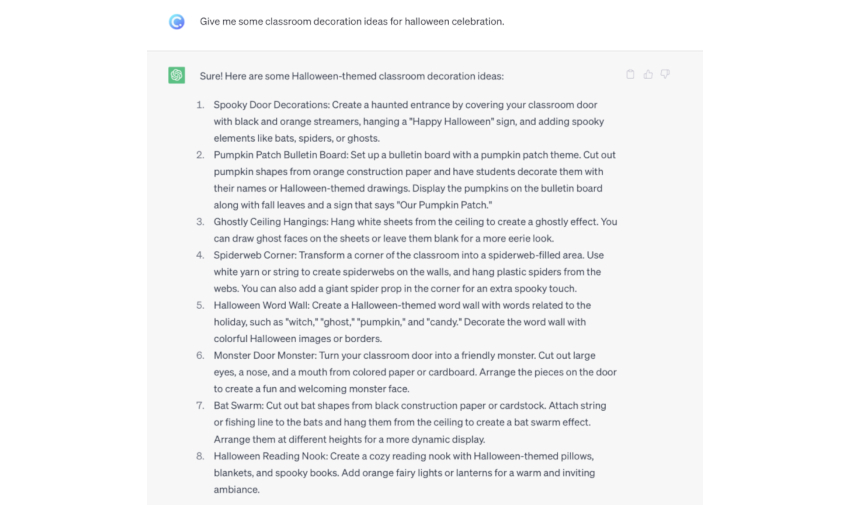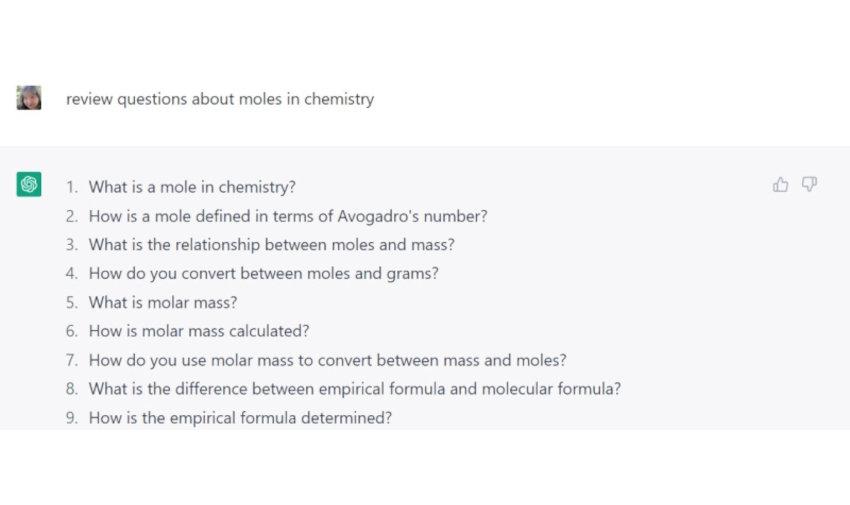ChatGPT – 11+ Examples, How to ChatGPT
ChatGPT has revolutionized so many aspects, elements, and characteristics of the field of education at all levels. Students and teachers can make use of OpenAI’s ChatGPT to help create efficient and effective processes that will not only improve one’s performance in the scholarly environment but will also save the student or teacher more time. But note the improper use of ChatGPT has risks for both the teacher and student as it will hinder the development of specific learning aspects one can uniquely find in the context, theme, and tone of one’s classroom..
1. Develop Crash Course Study Plans With ChatGPT
There are times when students will not have enough time to thoroughly study every single subtopic of a subject due to external or internal factors in their life. A student can use ChatGPT to help create a crash course study plan that can succinctly summarize all the important concepts the student has to learn in a specified period. One can use ChatGPT to help provide the crash course study plan of a specific subject to help the student prepare for whatever study objective they have to reach.
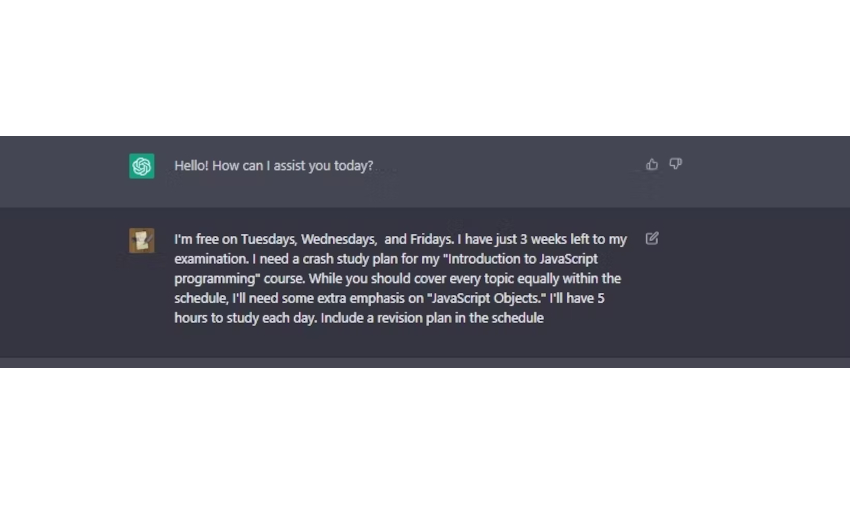
2. ChatGPT Prompts that will Identify Shortcuts or Tricks To Helpt with Complex Course Problems for One’s Classes
Each subject or concept has its specific nuance and complexity that it may present to a student. It is a fallacy to assume all students can grasp the subject at the same rate; instead, a confused student can use ChatGPT to create a learning guide that will serve as a way for the student to understand the topic easily. For example, a confused student can prompt ChatGPT to explain Newton’s first law of motion with simple terms while providing real-life examples so one can relate to the theory.
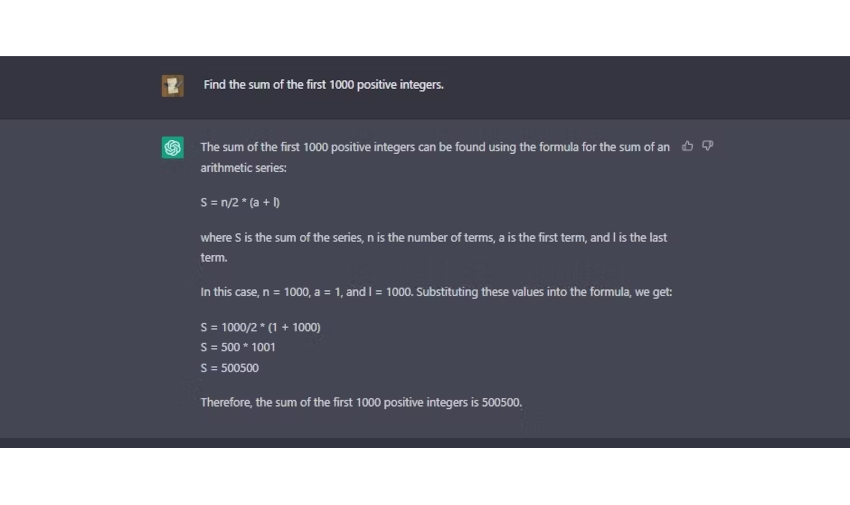
3. ChatGPT Tips to Stay Ahead of the Learning Curve in School
Aspiring or wise students can adopt various strategies and tactics that allow them to stay ahead of the learning curve and compete with other high-scoring students. These types of students can use ChatGPT to inform them of tips and tricks they can employ and integrate into their daily school life, which will allow them to stay ahead of the learning curve. A student can prompt ChatGPT with, “Can you provide me with college studying tips for the subject of mathematics, which will allow me to stay ahead of the learning curve?”
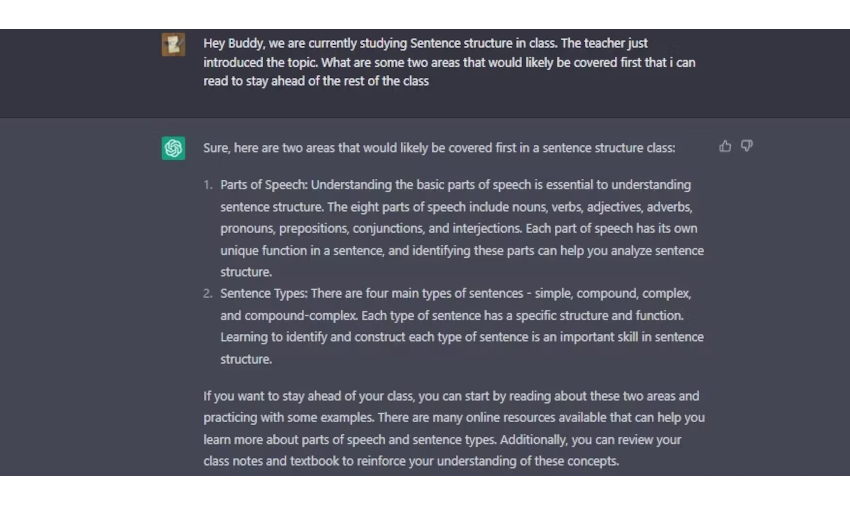
4. Improve or Review Creative Writing ChatGPT in Schools
Creative writing is a form or type of writing wherein the writer will use their imagination to create fictional works or poems. Due to the structure of creative writing, there is a higher importance on the impact and quality of the story or content of the creative work. One can use ChatGPT to help improve and review the writer’s creative writing by prompting ChatGPT with a copy of one’s work and asking the AI to either improve or review the content. Just note the AI will not replace an organic reader and editor.
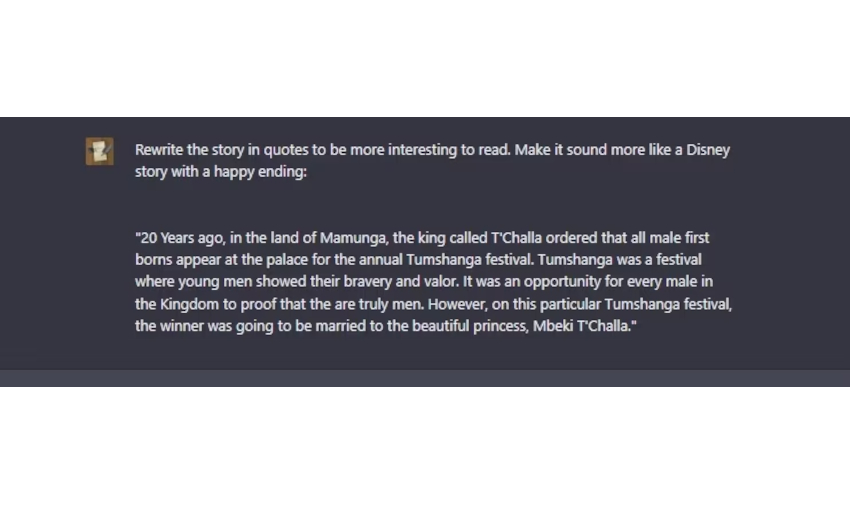
5. Generate Classroom Decoration Ideas Using ChatGPT
The classroom acts as the learning environment where the students will spend most of their time in the school. For primary and secondary school, the teacher will need to ensure their classroom can accommodate and invigorate their students. Teachers can use ChatGPT to help create and brainstorm classroom decoration ideas and themes they can use in their classrooms. A teacher can prompt ChatGPT with a specific theme and the type of decorations they can use in their classroom walls.
6. ChatGPT Prompts that Will Generate Relevant Reading Passages for Students
Reading is a very important hard skill as it will allow the person to absorb written or typed-out information from books or passages in a language they can understand. A language teacher can use reading as one of the best ways to teach their student a specific language while enhancing their reading skills. Teachers can use ChatGPT to help create relevant reading passages they can edit and use to teach their students, just don’t forget to edit and check the AI’s generated content.
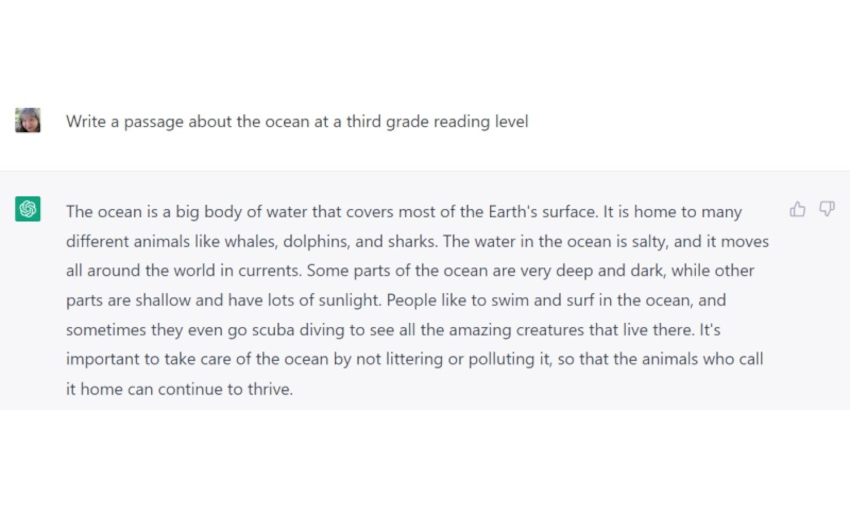
7. Generating Review Questions to Check the Student’s Understanding Through ChatGPT
Review questions are types of questions a student can answer to help determine their level of understanding of a specific topic or subject the said student is studying. A student can use ChatGPT to generate review questions for them without any of the answers to help gauge their current level of understanding of their chosen topic. For example, the student can prompt ChatGPT to provide them with ten review questions of discreet mathematics without any answers; the student can later feed the questions to ChatGPT and generate the correct answer or tap an expert to help provide correct answers to the question.
8. Create Writing Prompts for Classes Through ChatGPT
Writing is a hard skill that allows the person to write out or communicate their thoughts through the medium of writing, this skill also incorporates various soft skills. A writing teacher can use ChatGPT to help with creative writing prompts they will give to their students, which will not only allow them to practice their writing skills but also exercise their imagination and creativity. For example, a teacher can prompt ChatGPT to provide ten writing prompts that range from one to five words.
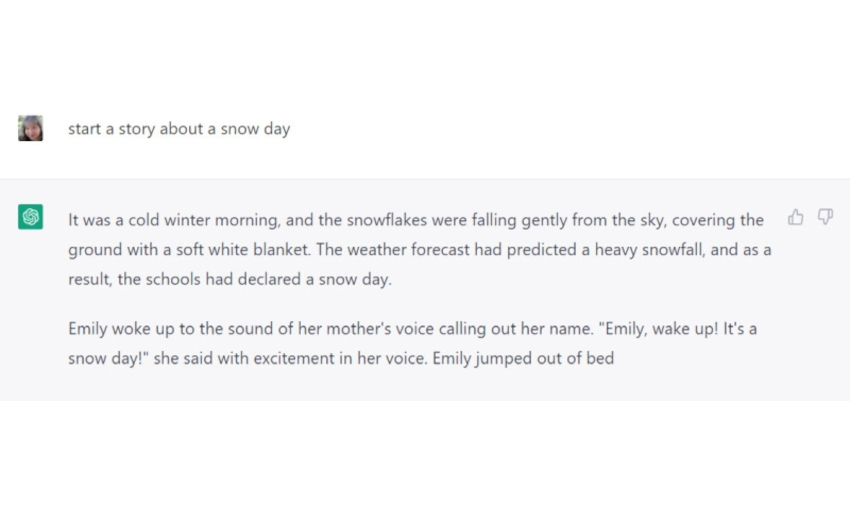
9. Using ChatGPT to Help Understand the English Vocabulary for School
English is one of the most commonly spoken languages one can easily observe in various countries throughout the world. Each language has its own rules and subsets of vocabulary that can affect one’s writing or speaking depending on the context that will surround the current situation or environment of the writing or conversation. One can use ChatGPT as a conversation partner or a teacher’s aide that can provide them with a sentence example of a hard word, tests, and exercises that can also gauge one’s vocabulary skills.
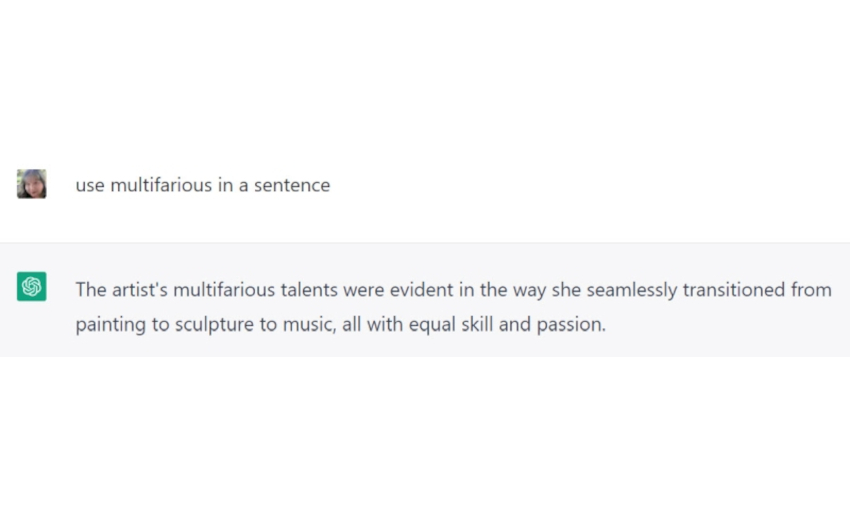
10. Write Notes and Letters to Parents Through ChatGPT for School
Teachers act as the middlemen who will relay and inform the student’s parents of their child’s performance and attitude in the classroom. When writing letters and notes to parents, a teacher can use ChatGPT to help create a formal and succinct letter that can properly relay pertinent information to the student’s parent without any room for miscommunication or misunderstanding.

11. Provide Examples of Specific Subjects Through ChatGPT for School
Students can better understand some subjects, like physics and other sciences, through the medium of practical and observable examples, they can relate to the real world. Teachers and curious students can use ChatGPT to help provide them with relatable real-world examples of specific concepts or theories. For example, a student can prompt ChatGPT to provide them with a real-world example of a food chain.

12. Create Math Problems Through ChatGPT For School
Mathematics is a hard skill that will require the person to often use the skill to master all of its facets. Teachers can use ChatGPT to generate different levels of mathematical problems they can let their students understand and answer. A teacher can prompt ChatGPT to generate five to ten math problems they can include in an addition worksheet.

What Are the Uses of ChatGPT for School?
People can use ChatGPT in a multitude of ways in the academic that can span from school work, homework, lesson plan, and student management. The usage of ChatGPT in the academe highly depends on the professional context the person has in the academic setting. For example, a student can use ChatGPT to help them create a letter outline or outline format that will help them create a letter of appeal. A teacher, on the other hand, can use ChatGPT to create a lesson plan format they can use for their classes.
How to ChatGPT to Help One’s Performance in Classes
A student can use ChatGPT to help improve their performance in specific subjects or classes they will attend in school. The student needs to remember that ChatGPT is a learning tool and not a shortcut they can take to act as a surrogate for them, which undermines the whole purpose of the academe. One can use the headers and examples listed above to help them have an observable reference they can use to improve their performance in classes.
Step 1: Use ChatGPT as a Tool to Elaborate Specific Complex Concepts
Each person has their specific specialty and bias when it comes to learning different types of concepts and subjects. You can use ChatGPT to help understand and elaborate specific concepts into bite-sized terms and explanations, which will allow you to easily understand their overall description. For example, if you are having trouble understanding chemical reactions and chemical properties, you can use ChatGPT to break down these topics in layman’s terms.
Step 2: Use ChatGPT to Create Questions for Self-Evaluation
Understanding is the highest level and form of learning, which means the person has fully absorbed the topic and dissected each of the topic’s elements. You can test your knowledge and understanding of a specific topic by letting ChatGPT create questions about a specific topic, which will gauge one’s understanding of the topic through self-evaluation.
Step 3: Use ChatGPT to Provide Examples of Confusing Subject
Sometimes a subject or topic is confusing as a stand-alone concept or in theory, one can use ChatGPT to provide real-world or real-life applications and examples of a specific topic you want to learn more about. For example, a Biology student can prompt ChatGPT to provide examples of biomes and food webs present in the whole biosphere.
Step 4: Using ChatGPT to Provide Tips and Tricks for Concentration and Studying
You can use ChatGPT to help provide tips and tricks one can use to improve one’s studying processes and one’s concentration during class. Not only can ChatGPT do all of that for the student, but the AI can also provide and dispense advice for note-taking and journaling which will improve one’s performance in school and academics. Other people can also use ChatGPT to provide them with various sources and resources the person can use to study.
FAQs
There are many issues ChatGPT presents when students use the AI chatbot to answer assignments and reports for them. Not only does ChatGPT create inaccurate or misleading content, but doing this will also undermine the whole learning process the student will undergo. It is important to create a distinction between using ChatGPT as a learning tool and using ChatGPT to act as a surrogate for a student, which will make the entire learning process useless. Therefore it is important for the student not to copy or use ChatGPT as an answering tool and instead use it as a learning aid.Why is it important not to copy the generated answer of ChatGPT for schoolwork?
ChatGPT tends to mix and match online information and data, which might draw misinformed conclusions and inaccurate data. There are also instances where ChatGPT will provide the wrong answer due to the lack of context the person has placed into the ChatGPT prompt. Therefore it is essential for you to properly double-check the content and information ChatGPT generates from your prompt.Why do I need to double-check the content ChatGPT Generates for me?
No, ChatGPT alone shouldn’t be the only one that generates and creates the lesson plan you will apply to your student. You should integrate your personal experience and utilize ChatGPT as a tool to help create your lesson plan or properly pace out specific subtopics in your specific subject. Remember ChatGPT should only be a tool and not a surrogate or a replacement for a professional.Should I rely on ChatGPT to help create a lesson plan for my students?
ChatGPT has plenty of academic uses that will allow students and teachers to prosper and grow in the academic context and environment. The uses of ChatGPT can span from interacting with students, lesson plans, learning goals, student objectives, and more. But one should also properly observe the proper usage of ChatGPT as improper use of ChatGPT can undermine the whole learning process of the student. Therefore both students and teachers need to know how to best use OpenAI’s ChatGPT in the school or academic setting.



